One of Budapest’s most popular attractions are its bath houses. And they serve more than just the purpose of cleansing. This historic piece of the Hungarian capital’s culture has a social function too. Here are some tips on making the most of Budapest’s baths.
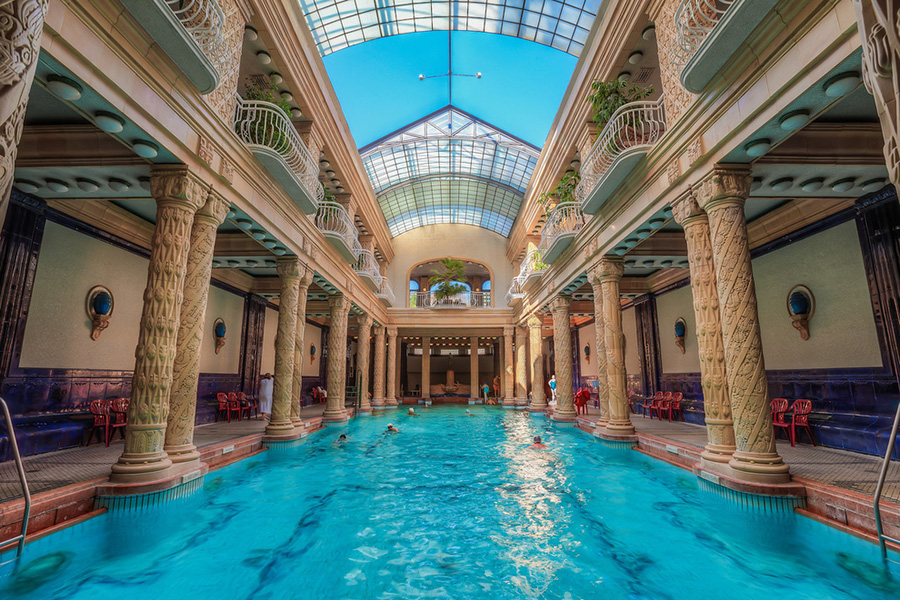
The main pool at Gellért Thermal Bath (Photo: Ibolya via Flickr / CC BY 2.0)
Steeped in history and tradition, the bathing culture in Budapest dates back centuries but is still as popular as ever, having been refined throughout the centuries. With a captivating atmosphere, Budapest’s thermal baths are both a place of solitude, and also a place where people gather to socialise and heal.
Visiting a bathing house in the City of Spas is a way for visitors to combine history, culture and modern-day society in one place. The bathing ritual has developed from the Roman times, when bath houses were a place for socialising, to the Ottoman rule in the 16th century when the healing powers of thermal water was utilised and became more widely available to Hungarians. The two eras have both helped inform the way thermal baths are used in the city today.
The history of thermal baths in Budapest
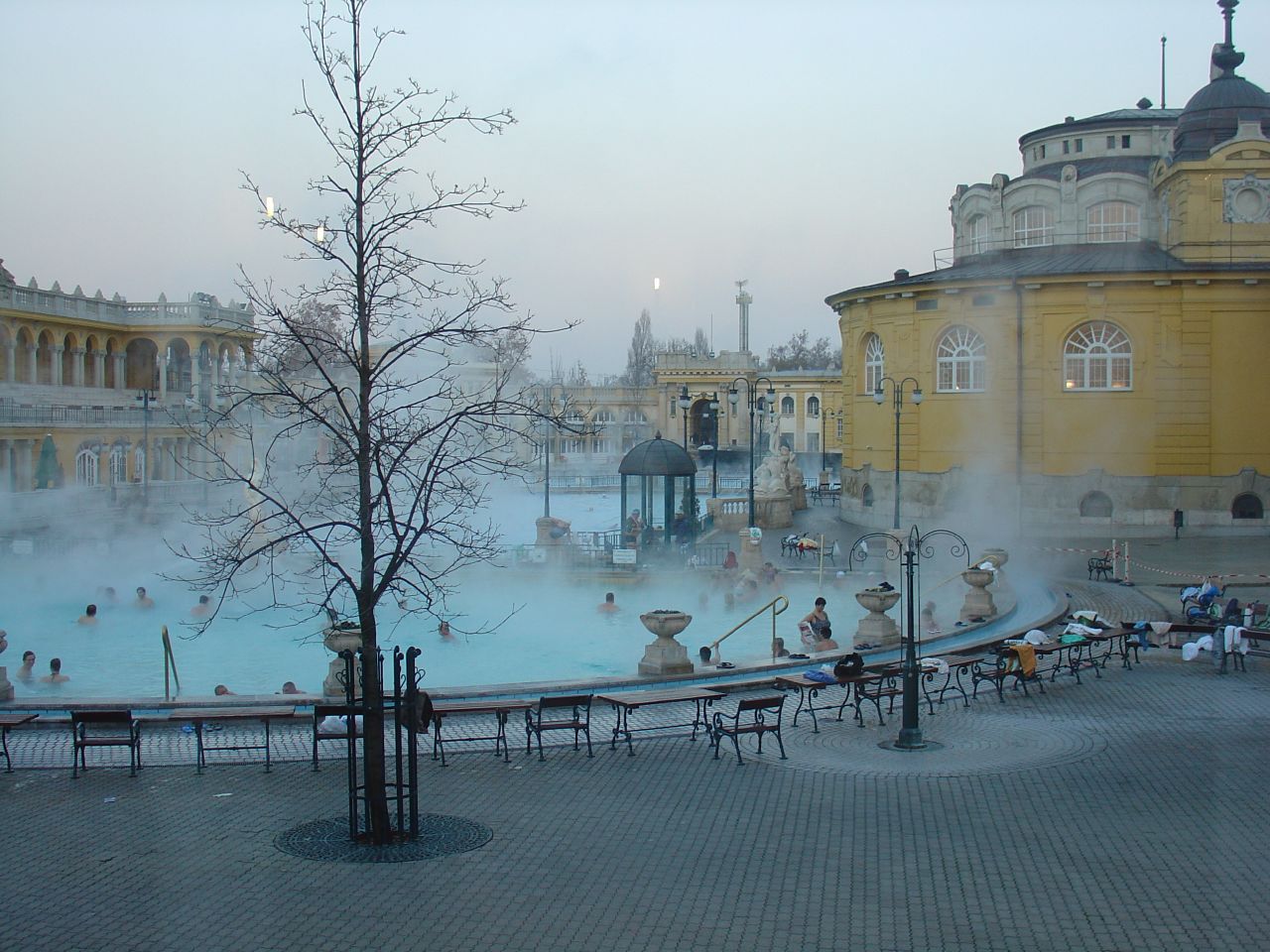
The steamy outdoor bath at Széchenyi Thermal Baths (Photo: amanderson2 via Flickr / CC BY 2.0)
Famous for their bathing rituals (among other things), the Romans built bathing houses around the hot springs in the Danube basin in Aquincum (now Budapest), of which only ruins remain. These bathing houses were the centre of Roman life; the ornate marble pools were a lavish venue for socialising, and a place where gossip and secrets were traded.
The Hungarians followed suit, using the hot springs for their healing purposes during the 9th and 10th centuries. But it wasn’t until much later, during the Ottoman rule, that the healing properties of thermal water became better understood. The bathing culture flourished in this period with Turkish baths being built on well-established springs.
Massage and other wellness treatments were also introduced by the Ottomans, using oils and creams for further health benefits. This was an essential part of the Ottoman bathing process. The bathing ritual is now embedded into society and the few original Turkish baths which remain today are reminders of its origins.
Where do thermal springs come from?
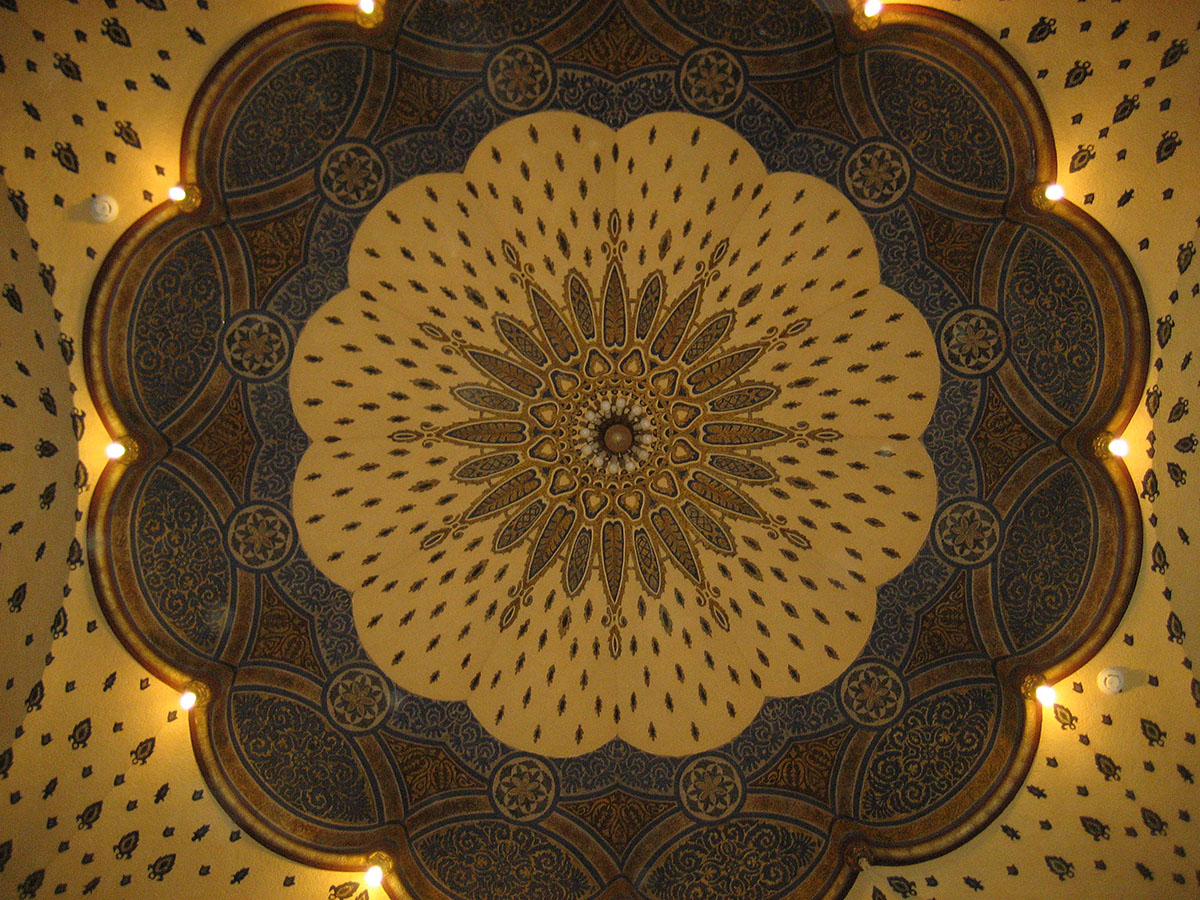
Ornate mosaic celling in Gellért Thermal Bath (Photo: Jerome Strauss via Flickr / CC BY-SA 2.0)
Warm sulphuric water rises from deeper in the Earth’s crust through faults, often caused by a tectonic shift. The Danube runs along such a fault, allowing thermal water to rise and escape from deep in the ground throughout the surrounding basin. The water is heated by geothermal activity and, as it passes layers of rock and soil, the water collects minerals such as magnesium, sodium, chloride and calcium. Ratios of minerals depends on the geology of the area, so can vary from hot spring to hot spring.
These minerals are useful to the human body. Bathing in mineral-rich thermal water is believed to restore the body’s equilibrium, potentially healing ailments caused by certain mineral deficiencies. Organ function, skin conditions, rheumatism, respiratory, circulatory, spinal and joint issues are all believed to be eased by bathing. This soothing ritual also has huge benefits to the mind. Taking time for oneself and relaxing in a peaceful environment can quiet the psyche, allowing time to process thoughts and restore a state of calm.
Best way to use the baths
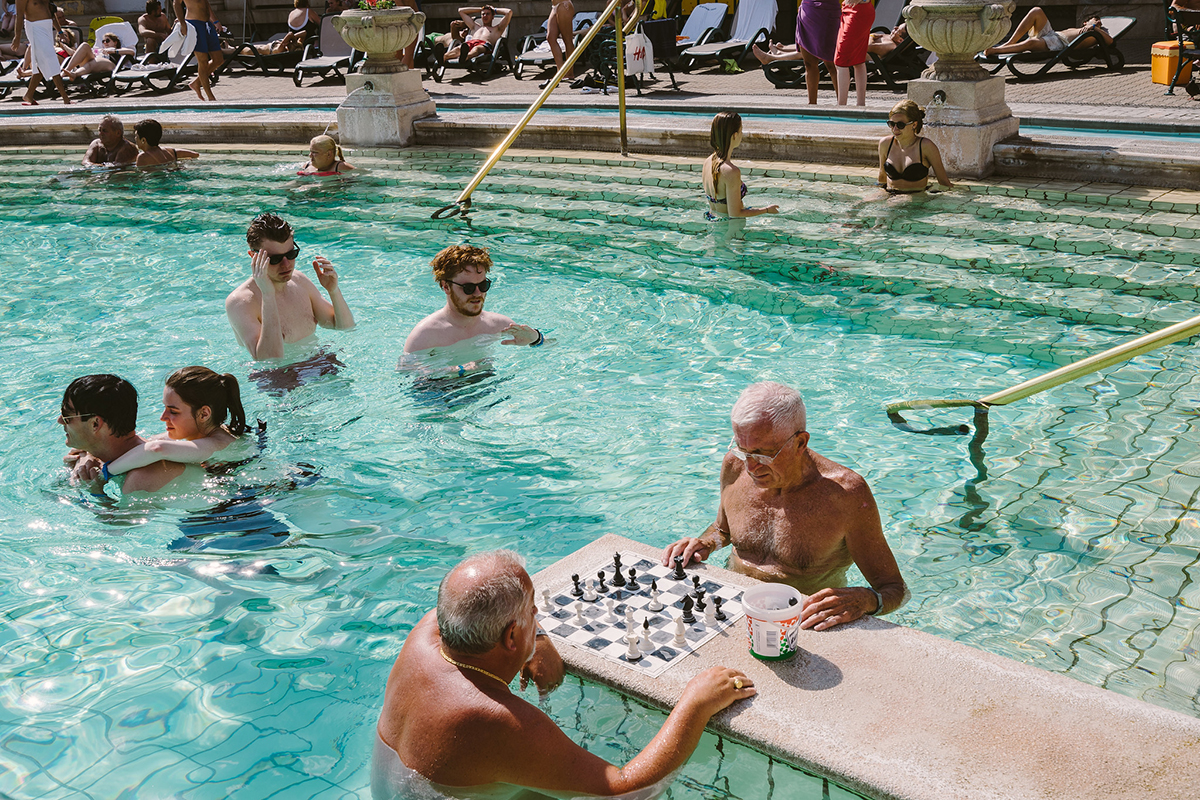
A spot of chess in the bath (Photo: Wei-te Wong via Flickr / CC BY-SA 2.0)
The best way to bathe is as follows: First shower, then relax in a warm pool (usually the main central pool). When ready to move on, take a dip in a cold pool before warming the body further in the dry heat of the sauna. Take a cold shower and head straight into the humid heat of the steam room (both saunas and steam rooms often have various temperatures to choose from). Take another cold shower (or tip the ice bucket) before re-entering the pools. Start in the coldest, moving up to the hottest. When finished, shower and relax on a lounger wrapped in the comfort of a towel. This mixture of hot and cold is a great way to improve circulation, getting the blood pumping and invigorating the organs.
Remember to wear flip flops, take a towel, and don’t wear silver jewellery in the thermal pools as silver tarnishes.
Must-visit baths
From traditional Ottoman spas to vast, modern complexes, each bathing house has a unique atmosphere and offers a different experience; come to exercise, relax, heal, for treatments or to party. All offer a modern swimming pool and treatments in addition to the thermal pools. Here are some of the best spas in the city.
Red, green and yellow light dances in the steam lingering over the central pool in the Rudas Baths (Döbrentei tér 9), streaming in through the Ottoman dome above. This spa dates back over 500 years and remains one of the most authentic in the city. In each of the four corners surrounding the central pool are smaller pools of varying temperatures. A sauna, an aromatic steam room, an ice bucket and plunge pool are hidden through a small opening between two of the pools. This spa offers segregated bathing times and is open Friday and Saturday evenings until 4am.
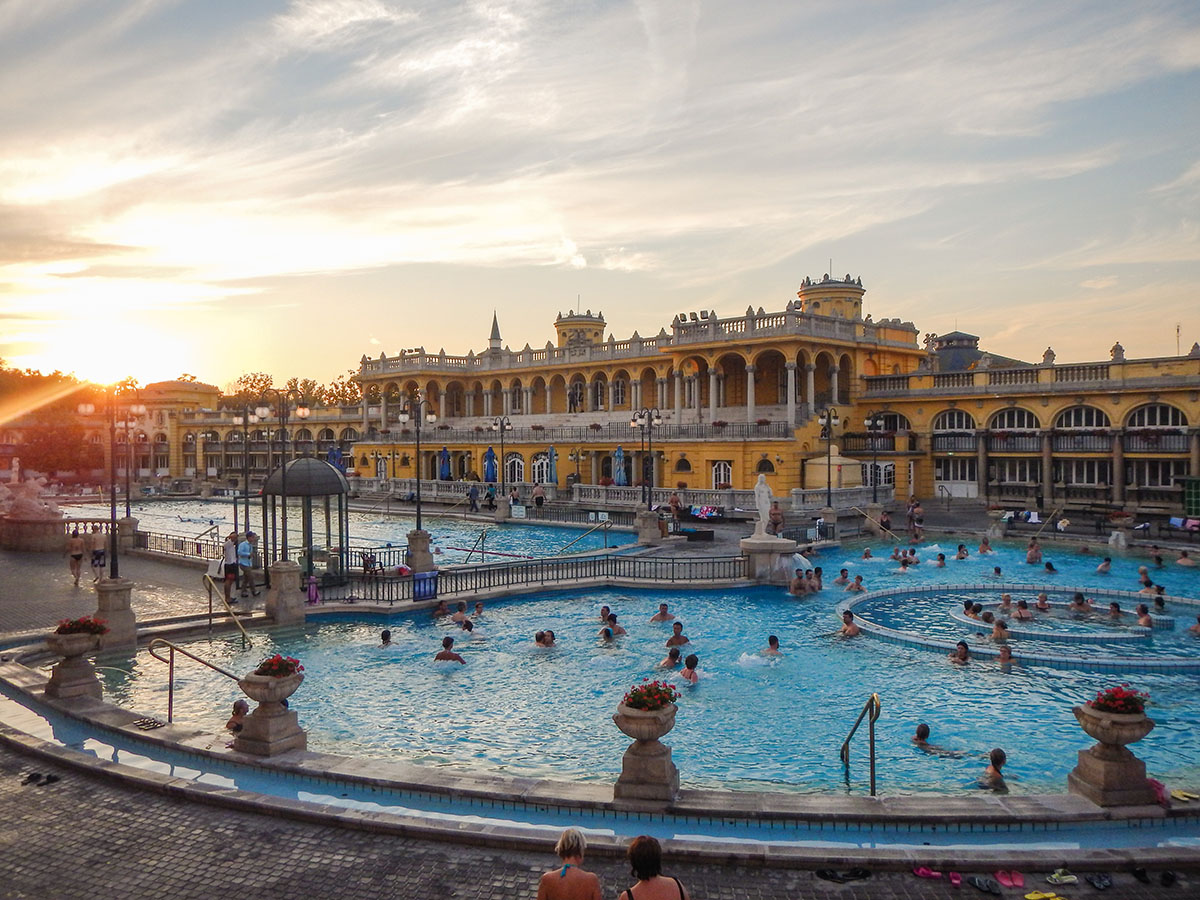
Széchenyi Thermal Baths at sunset (Photo: Shawn Harquail via Flickr / CC BY-NC 2.0)
Széchenyi Thermal Baths (Állatkerti krt. 9–11) is the most popular complex and one of the largest in the city. It is famous for its mega Saturday night “sparty”, when djs take to the decks as night falls and turn this outdoor thermal pool into a wild nightclub. During the day, sun loungers edge the main thermal pool, ready for reclining when the sun shines. Inside, the complex seems to be never-ending. A linear selection of elaborate pools continues from room to room with various saunas, steam rooms and showers located in crevices. There is an outside kiosk by the main pool for refreshments.
The outdoor pool of Lukacs Baths (Frankel Leó út 25–29) – a historic indoor and outdoor complex housed in a grand ochre coloured building – is situated in a secluded courtyard. Cleanly decorated, the white tile walls, chequered black and white marble floors and splashes of colour brought in by the green and red columns placed throughout, give a fresh opulent feel to the inner complex. Predominately frequented by locals, it is becoming more popular with tourists due to the weekend bath parties when this serene spa is tainted by the pink, blue, red and green disco lights. There is a Himalayan salt wall that is designed to help those with respiratory issues, a weight bath to aid spinal issues and mud treatments are also offered.
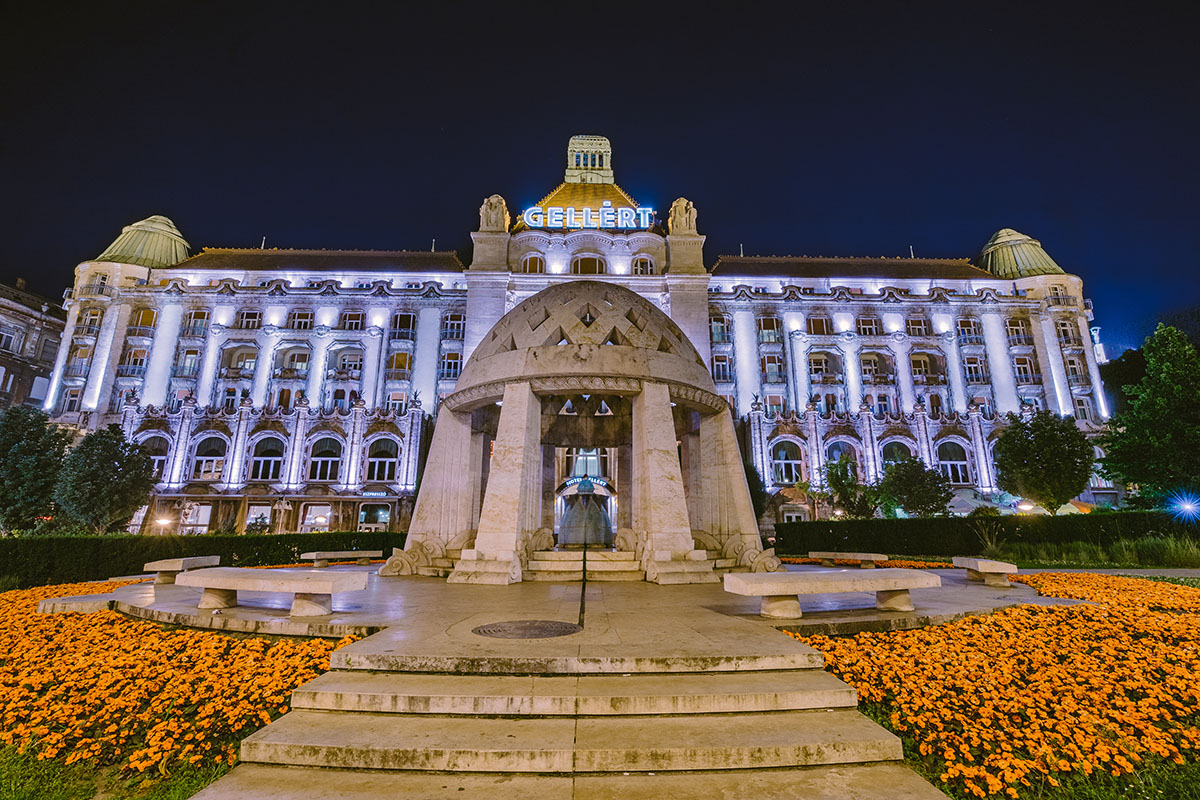
The entrance to Gellért Thermal Bath (Photo: Wei-te Wong via Flickr / CC BY-SA 2.0)
The elaborate Ottoman-style entrance to Gellért Thermal Bath (Kelenhegyi út 4) on the edge of the Danube gives away its origin. Built by the Turks hundreds of years ago, this is another authentic spa complex. Ornate columns support balconies and the vaulted glass ceiling lingering over the main bath. Colourful mosaics decorate the floor and walls, continuing the traditional décor. Water pours from fountains into the main bath, constantly refreshing the pool. Smaller pools are equally ornate, curved around elaborate statues with blue tiles reflecting in the pools, making the water look azure. There is an outdoor spa here too.
One of the oldest spas in Budapest, Király Thermal Bath (Fő u. 84) is typically Ottoman. The main thermal pool is located in a historic building constructed from large stone blocks. The dome arched over the octagonal pool provides a dim white light through the tiny holes which puncture it, cutting through the steamy haze and creating an atmospheric ambience. The newer section of the bath house is in a slight state of disrepair on the outside; stonework is exposed through crumbling green plaster, but inside tiles cover the floors and walls and with large windows and bright lights creating an appealing feel. There are three smaller thermal pools here and a modern Jacuzzi.
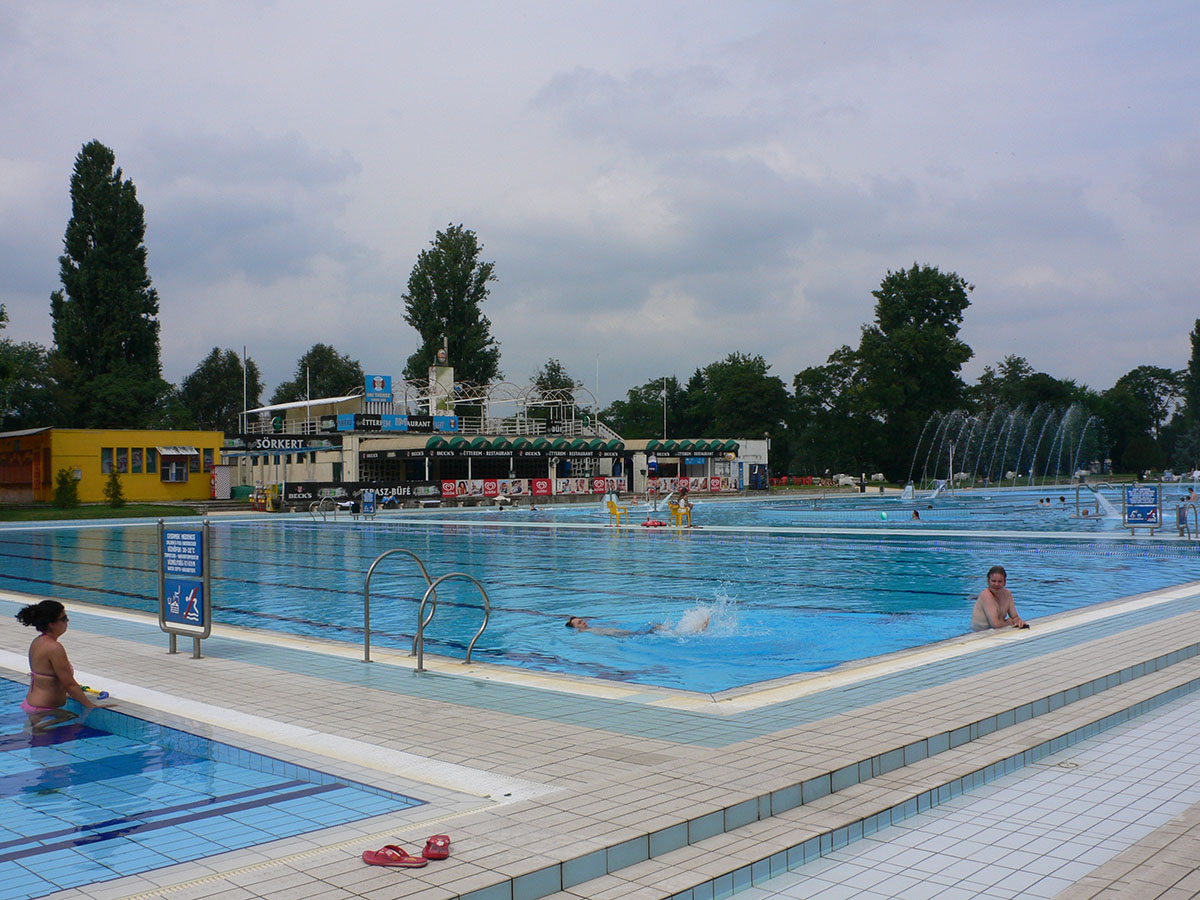
Swimming pools at Palatinus Strand Baths (Photo: Heather Cowper via Flickr / CC BY 2.0)
Located on the verdant Margret Island the Palatinus Strand Baths (Soó Rezső stny. 1) complex is a place where locals and families usually gather. Swirling tile seats help to section off the endless outdoor body of water; slides, aquatic play equipment, shallow children’s pools, swimming lanes and quiet areas with seats – for those who just want to relax submerged in the warm waters – are all available. Grassy edges are home to sun loungers (which get occupied early) and manicured flower beds, with trees offering shade in the warmer months. Inside are various, more traditional, thermal baths of various temperatures. The rose garden outside the complex and further parkland on Margret Island create the perfect backdrop for a post-dip stroll.
A mix of traditional and modern styles blend at Császár Baths (Árpád Fejedelem útja 7), locally known as Veli bej. The traditional dome feature over the central pool is plastered and painted, instead of the usual stone block, with contemporary tiles covering the floor. Now part of a spa hotel, this ancient thermal spot was used in Roman times, with the current bath house being built during the Ottomon rule when it was used as a hospital. Sections of the original rugged stone walls remain intact, topped by glass ceilings and fresh white walls. There are four additional thermal pools here as well as a Jacuzzi and hydrotherapy tub. It is favoured by locals and rarely crowded.